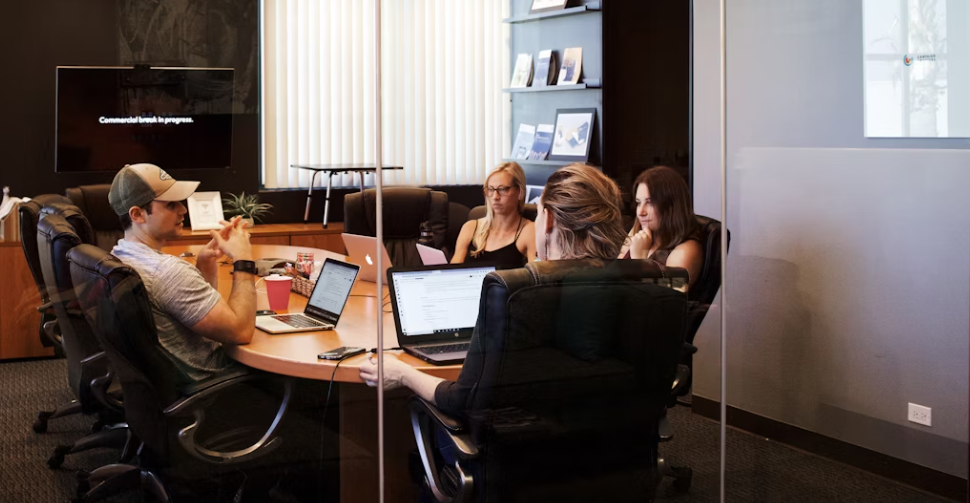Hiring the right candidate can feel like finding a needle in a haystack—especially when recruiters and hiring managers aren’t aligned from the start. Miscommunication, unclear expectations, and rushed decisions can cause even the most promising recruitment efforts to fall apart. So, how do you set up your hiring process for success from day one?
Enter: the intake meeting.
Think of it as the kickoff session for hiring—your chance to get on the same page, define success, and map out the road ahead. In this guide, we’ll break down what intake meetings are, why they matter, how to prepare for one, the questions you need to ask, and what to do once it’s done. Whether you’re a seasoned recruiter or a first-time hiring manager, this article will help you turn intake meetings into a powerful hiring tool.
What Is an Intake Meeting?
An intake meeting is a pre-hiring discussion between the recruiter and hiring manager that sets the tone and structure for the hiring process. It’s the moment when everyone hits pause to align on the “who, what, when, where, and how” of filling a role.
While it may seem like just another meeting on the calendar, its purpose is anything but ordinary. The goal is to remove ambiguity and create a shared vision of success—from job responsibilities and candidate must-haves to interview stages and salary expectations.
You’re essentially creating a recruitment roadmap that will guide every step of the hiring journey.
Key Goals of an Intake Meeting
So, what exactly should an intake meeting accomplish?
At its core, it’s about alignment and clarity. Here’s what the recruiter and hiring manager should walk away with:
- A crystal-clear understanding of the job’s title, responsibilities, and ideal candidate profile
- Agreed-upon salary range and total compensation expectations
- An interview process outline (including who’s involved and what’s being assessed)
- Key timelines: when hiring should start and when the new hire should ideally begin
- A plan for sourcing candidates—where to post the job and how to attract talent
When intake meetings are skipped or done poorly, the result is often a painful mismatch in expectations. But when done right, they smooth out the hiring process and set everyone up for success.
When Should You Conduct an Intake Meeting?
The short answer? Before any recruiting starts.
This meeting is your kickoff—your chance to align before anything goes live. Here are a few scenarios where intake meetings are especially crucial:
- The role is brand new or has evolved significantly
- The recruiter or hiring manager is new to the organization
- The position has unique requirements or high urgency
- A previous hiring attempt failed due to unclear expectations
If you’re filling multiple roles, each one should ideally have its own intake meeting. The more complex or strategic the hire, the more essential this early alignment becomes.
How to Prepare for an Intake Meeting
Let’s say you’ve scheduled the meeting—great. Now it’s time to show up prepared. The more groundwork you lay ahead of time, the more productive the meeting will be.
1. Gather the Job Description and Title
Start by requesting the most up-to-date job description from the hiring manager. Then read it critically. Ask yourself:
- Is the role clearly defined?
- Are any requirements too vague, too strict, or unrealistic?
- Are there buzzwords or jargon that might confuse candidates?
Jot down your observations and bring them into the meeting for discussion.
2. Request Examples of Past Hires or Resumes
One of the best ways to understand what a hiring manager wants is to ask for real-life examples. Maybe it’s a former employee who excelled in a similar role or a resume they bookmarked as “ideal.”
This gives you tangible insight into their expectations—and helps you spot any mismatches early on.
3. Review and Offer Constructive Feedback
Based on the job description and resume samples, suggest ways to optimize the posting or broaden the candidate pool. For example, if the job requires a very specific certification but the salary is mid-tier, gently suggest widening the criteria or adjusting the budget.
4. Research Market and Salary Data
Coming in with market insights positions you as a strategic partner—not just a paper-pusher. Tools like Glassdoor, LinkedIn Salary Insights, and PayScale can help you present realistic data on:
- Competitive salaries
- Talent availability
- Common skills for the role
This keeps conversations grounded in reality, not wish lists.
5. Draft a Sample Hiring Timeline
Before the meeting, sketch out a basic timeline. For example:
- Week 1: Finalize job post and sourcing strategy
- Week 2–3: Start screening and first-round interviews
- Week 4–5: Final interviews and offer stage
This helps set expectations and ensures you’re both working toward the same deadline.
Questions to Ask During the Intake Meeting
Asking the right questions is half the battle. These conversations shouldn’t just be about checking boxes—they’re your chance to dig deep, listen actively, and uncover what really matters.
Introductory Questions
Start by understanding the “why” behind the role.
- Why is this role open now?
- What’s your team’s mission, and how does this role contribute?
- Who will the new hire report to? Will they have direct reports?
- Describe your ideal candidate in a sentence or two.
Role Responsibilities & Expected Outcomes
Get specific about what success looks like.
- What are the top five tasks this role will own?
- What should this person achieve in the first 90 days?
- What teams will they collaborate with the most?
Must-Have Skills and Nice-to-Haves
Separate the essentials from the extras.
- What technical or soft skills must they have?
- Are there specific tools or platforms they should know?
- What would be a bonus but isn’t mandatory?
Compensation and Budget
Clarity here can save weeks of back-and-forth.
- What’s the salary range?
- Are bonuses, stock options, or commissions included?
- Is there room to stretch the budget for the right person?
Hiring Timeline and Process
This ensures everyone is working in sync.
- When do you want them to start?
- Who will be involved in interviews?
- What does your ideal interview process look like?
These questions can spark meaningful conversations that bring blind spots to light. And that’s the point—the better the questions, the smoother the process.
What to Do After the Intake Meeting
Now that the meeting is done, your job is to turn the conversation into action. Here’s how:
Send a Summary Email
Recap the discussion, decisions made, and what comes next. This acts as a written agreement and reference point for the hiring process.
Build the Sourcing Strategy
Based on the agreed candidate profile, start writing your job ad, choose the sourcing channels, and engage your talent pipeline.
Finalize the Interview Strategy
Design a structured interview process—outline stages, assign panel members, and create scorecards or assessment rubrics.
Ensure Access to Hiring Platforms
If you’re using an ATS or collaborative hiring tool, make sure the hiring manager has access and knows how to use it.
Maintain Communication
Check in regularly as applications come in, offer interview prep support, and keep everyone informed of progress and pivots.
Review and Realign if Needed
If several rounds go by without finding the right candidate, don’t be afraid to revisit the intake meeting insights and tweak the strategy.
Best Practices for Successful Intake Meetings
A few golden rules can make intake meetings your secret hiring weapon:
- Be prepared, not reactive
- Ask questions that get to the why, not just the what
- Back up recommendations with data
- Clarify what success looks like—for the role and the process
- Stay collaborative, not transactional
Frequently Asked Questions (FAQs)
While similar, an intake meeting focuses specifically on recruiting alignment, whereas a kickoff might be more general or involve other project stakeholders.
Typically, 30–60 minutes depending on role complexity. It’s time well spent.
It’s not recommended. Every hiring manager and team is different—even for similar roles. The alignment still matters.
Conclusion: Set the Stage for Hiring Success
Hiring success doesn’t begin when you post the job—it begins with the intake meeting. This is where you shape the candidate experience, reduce costly delays, and build a true partnership between recruiter and hiring manager.
Whether you’re filling a high-priority executive role or hiring for a rapidly growing team, treating the intake meeting as a strategic moment—not a formality—can transform the outcome.
Get aligned. Ask the right questions. And go into every hire with a plan, not just a job post.
Your future hire will thank you for it.


